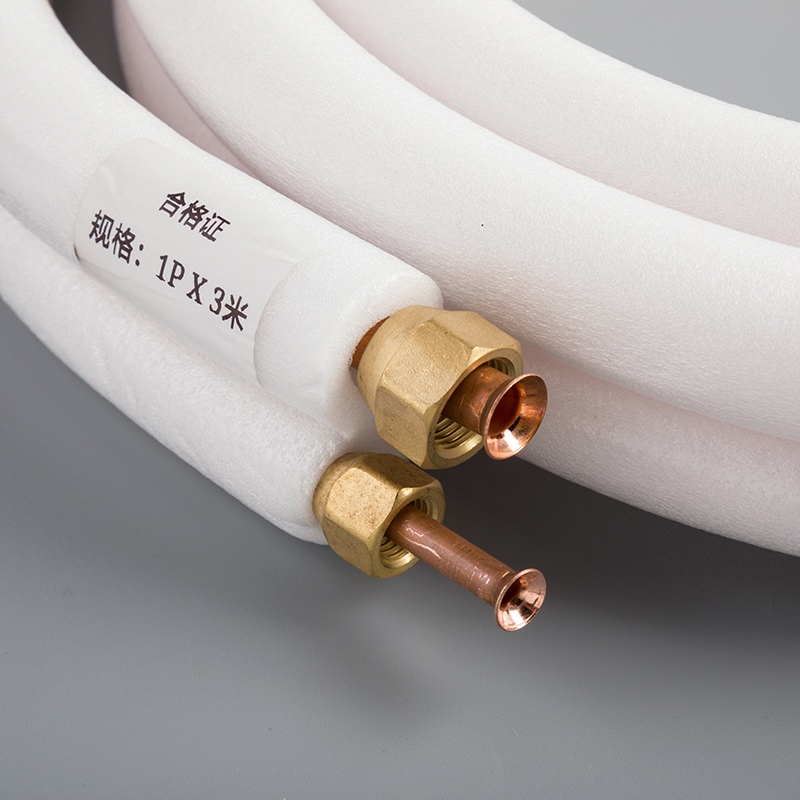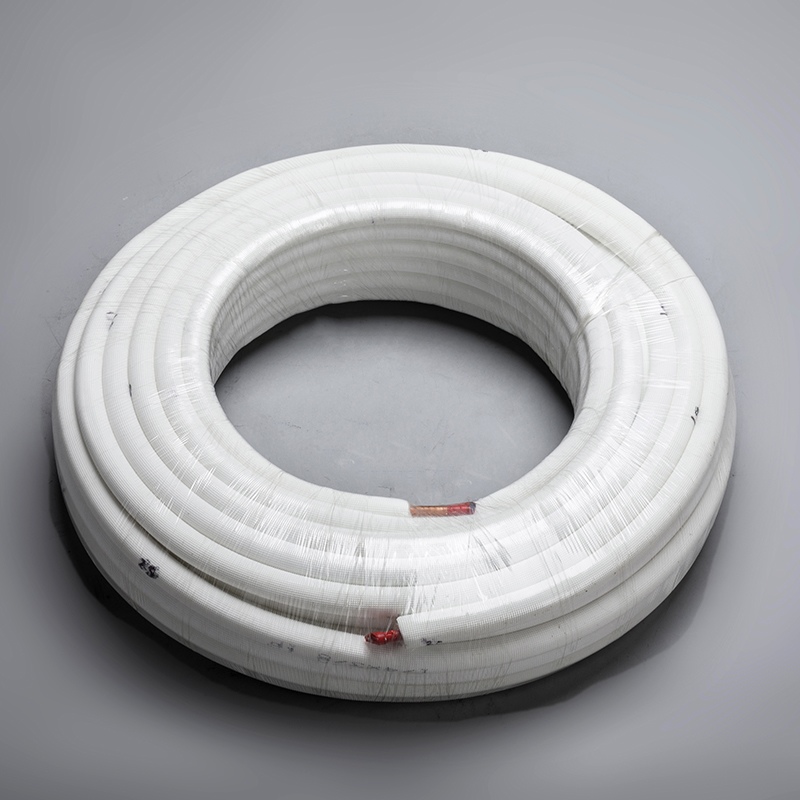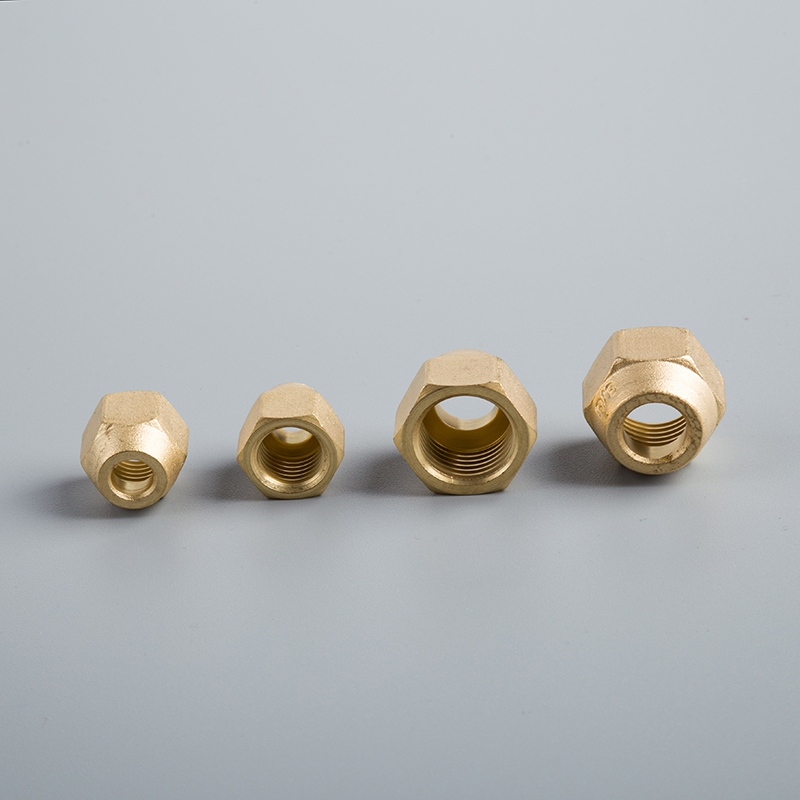Essential Tips for Choosing Air Conditioning Copper Pipes

Tips for Selecting Air Conditioning Copper Pipes
Selecting the right copper pipes for air conditioning systems is crucial for optimal performance. Copper pipes excel in heat conductivity, ensuring efficiency and cost-effectiveness. In this blog, we will delve into the significance of these components in HVAC systems, highlighting why copper is the material of choice and its benefits for both residential and commercial spaces.
Key Considerations for Choosing Copper Pipes
When selecting copper pipes for air conditioning systems, it is essential to consider proper sizing based on measurements and manufacturer specifications. Ensuring the correct dimensions play a crucial role in the efficiency and performance of the HVAC system.
How to Measure Correctly
To measure correctly, one should accurately assess the space where the copper pipes will be installed. Precision is key to avoid any unnecessary adjustments post-installation.
Understanding Manufacturer Specifications
Understanding the manufacturer's specifications provides valuable insights into the compatibility of the copper pipes with the air conditioning unit. It ensures seamless integration and optimal functionality.
Importance of Selecting the Right Pipe Size for Efficiency
The right pipe size directly impacts system performance, affecting both energy consumption and overall efficiency. Choosing an inappropriate size can lead to inefficiencies and potential breakdowns.
Impact on System Performance
Selecting an inadequate pipe size can hinder the overall performance of the air conditioning system, leading to suboptimal cooling or heating capabilities. It is crucial to match the pipe size with the system requirements.
Energy Efficiency Considerations
Opting for the correct pipe size promotes energy efficiency by reducing unnecessary strain on the HVAC system. This not only lowers energy costs but also contributes to a more sustainable operation.
Benefits of Using SWG22 Copper Pipes
Utilizing SWG22 copper pipes offers various advantages that enhance the longevity and reliability of air conditioning systems.
Corrosion Resistance
SWG22 copper pipes exhibit exceptional resistance to corrosion, ensuring durability even in challenging environments where rust may pose a threat.
Durability and Longevity
These copper pipes are known for their robust construction, guaranteeing long-term performance without degradation. Their longevity minimizes maintenance needs and replacement costs over time.
Proper Installation of Copper Pipes

For optimal installation of copper pipes in air conditioning systems, following precise steps is crucial to ensure efficiency and performance.
Steps for Optimal Installation
Preparing the Pipes
Begin by inspecting the copper pipes thoroughly to check for any defects or damages.
Clean the pipes meticulously to remove any dirt or debris that could affect their functionality.
Cut the pipes accurately based on the required measurements, ensuring a precise fit within the system.
Deburr the edges of the cut pipes to prevent any obstructions in the airflow.
Ensuring Secure Connections
Use high-quality fittings that are compatible with copper pipes to guarantee a tight and secure connection.
Apply flux evenly on both the pipe ends and fittings before joining them together.
Heat the joint uniformly while soldering to create a strong bond between the components.
Inspect all connections post-installation to verify that there are no leaks or loose fittings.
Common Installation Mistakes to Avoid
Over-tightening Connections
Avoid applying excessive force when tightening connections as it can lead to damage or distortion of copper pipes.
Use a torque wrench or appropriate tools to ensure that fittings are secured without over-tightening them.
Incorrect Pipe Placement
Position copper pipes carefully during installation to prevent kinks or bends that could restrict airflow.
Follow manufacturer guidelines regarding pipe routing and spacing to maintain proper functionality.
Choosing Copper Pipe Fittings
When considering copper pipe fittings for air conditioning systems, several factors should be taken into account to ensure optimal performance and efficiency.
Factors to Consider
Pipe Size
Selecting the appropriate pipe size is crucial for seamless integration within the system.
The correct pipe size facilitates efficient airflow and prevents any restrictions that could impact overall performance.
Proper pipe sizing ensures optimal functionality and reduces the risk of system malfunctions.
Pressure Rating
Evaluating the pressure rating of the fittings is essential to withstand the operating pressures within the air conditioning unit.
Choosing fittings with a suitable pressure rating guarantees durability and longevity under varying pressure conditions.
Adequate consideration of pressure ratings prevents leaks or damages due to excessive pressure levels.
Temperature Requirements
Understanding the temperature requirements for copper pipe fittings is vital to maintain stability in diverse environmental conditions.
Selecting fittings that meet specific temperature requirements ensures consistent performance regardless of temperature fluctuations.
Complying with the necessary temperature specifications enhances the reliability and effectiveness of the air conditioning system.
Types of Fittings
Compression Fittings
Compression fittings offer a convenient solution for connecting copper pipes without requiring soldering or welding.
These fittings provide a secure and leak-proof connection by compressing onto the pipe through a threaded mechanism.
Utilizing compression fittings simplifies installation processes and allows for easy disassembly when needed.
Soldered Fittings
Soldered fittings, also known as sweat fittings, involve joining copper pipes using soldering techniques for a robust connection.
This method creates a permanent bond between pipes, ensuring long-term reliability and structural integrity.
Opting for soldered fittings guarantees a tight seal that withstands high temperatures and maintains system efficiency over time.
Comparing Copper and Aluminum Piping

Advantages of Copper Piping
Longevity
Copper piping boasts exceptional durability, ensuring a long lifespan for air conditioning systems.
Its resistance to corrosion and wear guarantees longevity without the need for frequent replacements.
Reliability
The reliability of copper piping in air conditioning units is unmatched, providing consistent performance over time.
Its robust construction and ability to withstand varying conditions make it a reliable choice for HVAC applications.
Advantages of Aluminum Piping
Cost-Effectiveness
Aluminum piping offers a cost-effective solution for air conditioning installations, reducing overall project expenses.
Its affordability combined with efficient performance makes it a popular choice for budget-conscious projects.
Weight Considerations
When considering weight, aluminum piping is significantly lighter than copper alternatives, facilitating easier handling during installation.
The lightweight nature of aluminum piping simplifies transportation and installation processes, enhancing overall efficiency.
Selecting the Correct Pipe Diameter
When choosing the correct pipe diameter for air conditioning systems, it is crucial to consider the optimal performance it can deliver. The diameter of the pipe directly influences the flow rate and pressure drop within the system.
Flow Rate Considerations
The flow rate in an air conditioning system is dependent on the pipe diameter selected. A larger diameter allows for a higher flow rate, ensuring efficient circulation of refrigerant throughout the system.
Pressure Drop Implications
Selecting an appropriate pipe diameter helps mitigate pressure drops within the air conditioning unit. A well-sized pipe minimizes resistance to airflow, preventing unnecessary strain on the system components.
Efficiency Benefits
Optimizing the pipe diameter offers various efficiency benefits that contribute to cost savings and prolonged equipment lifespan.
Energy Savings
By selecting the correct pipe diameter, energy consumption can be reduced as the system operates more efficiently. Proper sizing ensures that the air conditioning unit functions optimally without unnecessary energy wastage.
Reduced Wear and Tear
Choosing the right pipe diameter not only enhances energy efficiency but also reduces wear and tear on system components. With reduced strain on the equipment, maintenance requirements are minimized, leading to extended longevity of the air conditioning system.
Techniques for Cutting and Joining Copper Pipes
Proper Cutting Techniques
Begin by selecting the appropriate tools required for cutting copper pipes effectively.
Use a pipe cutter specifically designed for copper to ensure clean and precise cuts.
Measure the pipe accurately before cutting to avoid any errors in length.
Rotate the pipe cutter around the pipe, gradually tightening it with each rotation until the cut is complete.
Tools Required:
Pipe Cutter: Ensures clean and accurate cuts without causing damage to the copper pipes.
Measuring Tape: Essential for measuring the exact length of pipes before cutting.
Deburring Tool: Helps in removing any sharp edges or burrs after cutting for smooth connections.
Step-by-Step Guide
Measure: Use a measuring tape to determine the required length of the copper pipe accurately.
Mark: Mark the measured points on the pipe using a pencil or marker for guidance during cutting.
Cut: Position the pipe cutter at one of the marked points and rotate it around the pipe to create a clean cut.
Deburr: After cutting, use a deburring tool to remove any rough edges or burrs from both ends of the pipe.
Joining Methods
When it comes to joining copper pipes, two common methods are soldering and brazing, each offering unique benefits based on specific requirements.
Soldering
Soldering involves melting a filler material (solder) into the joint between two copper pipes to create a secure connection.
The joint is heated using a soldering torch until the solder melts and flows into the gap, forming a strong bond upon cooling.
Soldered joints are ideal for applications where lower temperatures are required, such as water supply lines or heating systems.
Brazing
Brazing is similar to soldering but involves higher temperatures and a different filler material called brazing rod.
The joint is heated to temperatures above 800°F (427°C), allowing the brazing rod to melt and fill gaps between copper pipes effectively.
Brazed joints are known for their strength and durability, making them suitable for high-pressure applications like refrigeration systems or HVAC units.
Testimonials:
Use bold for the person's name or position.
Blockquotes for the testimonial text.
Use italic for emphasizing impactful phrases.
Lists for multiple testimonials or key points within them.
Inline
codefor specific products, services, or outcomes mentioned.
The unsung heroes of HVAC systems are the copper pipes and tubes that ensure the smooth operation of air conditioning units. Choosing the right copper pipes is not just a matter of functionality; it is a decision that impacts efficiency and longevity. By following the outlined tips, individuals can optimize their air conditioning systems to perform at their best, providing comfort and reliability in both residential and commercial settings. Remember, the foundation of a well-functioning HVAC system lies in the selection of quality copper pipes.
See Also
Benefits of Opting for Copper Pipes in Air Conditioning
The Importance of Copper Pipes for Effective Air Conditioning
Key Ways Copper Pipes Transform Air Conditioning Systems
The Impact of Copper Pipes on Air Conditioning Innovation
Enhance Air Conditioner Performance with Copper Pipe Insulation Tips


